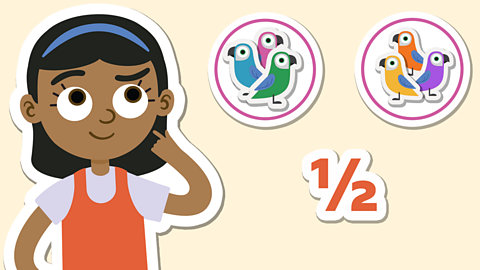Making a whole

Start by looking at a simple shape such as a circle or a square, like the ones opposite.
If we divide the shapes up into different parts, we can think of each part as being a fraction of the whole shape and that the total of these parts will equal one whole one (or shape).

The total of three quarters and one quarter is four quarters, or one whole.

The total of seven tenths and three tenths is ten tenths, or one whole.
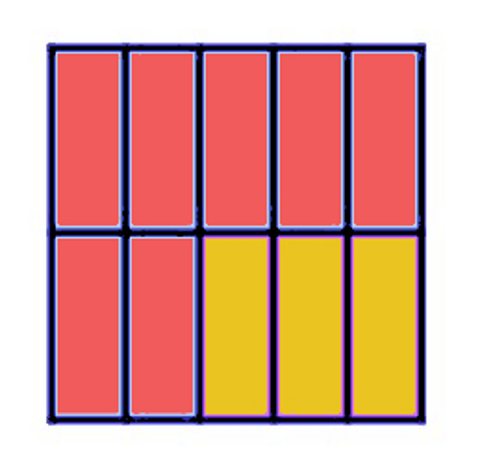
Using number lines to represent wholes
Let's now look at this number line which represents one unit, or one whole one.

We can mark and label this line to show how one whole can be divided up into different parts. Each part is a fraction of the whole. As before, the total of all the parts will equal one whole one.

In the number line above the total of five eighths and three eighths is eight eighths, or one whole.
Now look at this next number line.

The total of five tenths, two tenths and three tenths is ten tenths, or one whole.
Using hundred squares to represent a whole
Let's look at some other images that can help us understand more about how wholes are made and the equivalences between fractions and decimals.
In the hundred square below, the total of eighty-seven hundredths and thirteen hundredths makes one hundred hundredths, which is one whole.
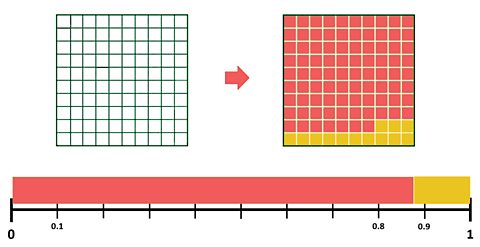
We can see this is then represented on the number line above in decimal form. The coloured bar on the left represents 0.87 and the coloured bar on the right represents 0.13.
0.87 + 0.13 = 1
Partitioning numbers
Partitioning numbers means showing how a number can be split into parts.
Look at these examples that show different ways a number can be separated into two or more parts.
The total of the individual parts is of course the number that you start with!

Part - whole models
Another way you can represent partitioning a number into different parts is to display them in a part-whole model, like this:

Part-whole models are a helpful way of showing how a whole one can be split into different parts, and that the total of these parts will be equal to one whole one.
Look at this example to see another way that you can display information about the parts that make up a whole.

Activity
Quiz
How much do you know about making wholes? Take this quiz to test your skills!
NEW! Play Guardians: Defenders of Mathematica - the Halloween update. gameNEW! Play Guardians: Defenders of Mathematica - the Halloween update
Experience Mathematica as you’ve never seen it before, with all-new backgrounds and costumes for Halloween. Available for a limited time only. Use your maths skills to save the day before it's too late!

More on Fractions
Find out more by working through a topic
- count13 of 26
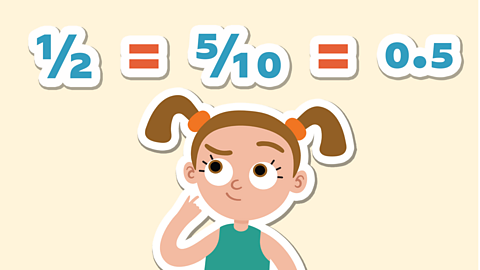
- count14 of 26
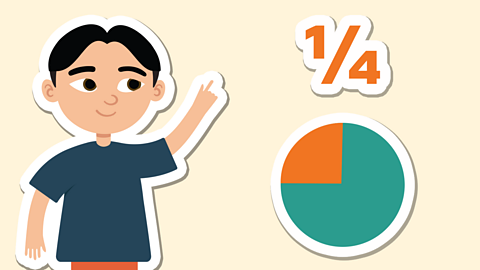
- count15 of 26
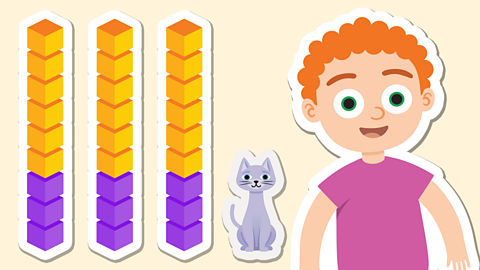
- count16 of 26
